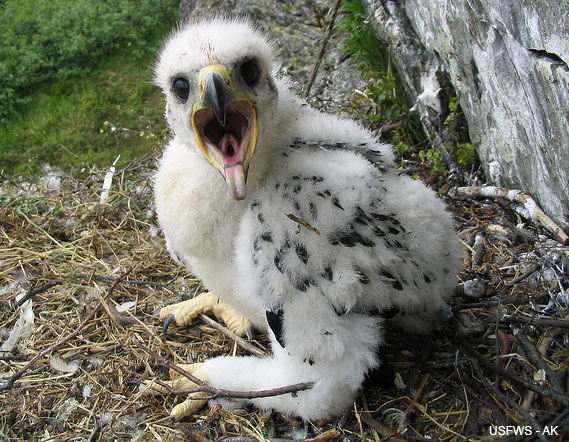COLVILLE RIVER
WHY TO LOVE THIS PLACE
Along the southeast border of the Reserve, the Colville River Delta is the largest and most productive river delta in northern Alaska. An Aquatic Resource of National Importance, the Colville River Special Area encompasses 2.44 million acres and incorporates two miles on either side of the Colville and two of its major tributaries — the Kikiakrorak and Kogosukruk rivers. The Colville River flows for 391 miles through the Colville River Special Area, the entirety of which lies north of Alaska’s Brooks Range.
AQUATIC RESOURCE
The Colville River Delta is the largest and most productive river delta in northern Alaska.
FOSSIL FUN
Bluffs in the region contain the world’s most extensive polar-region collection of dinosaur and other fossils.
FIND FALCONS
The cliffs along the Colville River provide critical nesting sites and adjacent hunting areas for peregrine falcons, gyrfalcons, golden eagles and rough-legged hawks.
FALCON FACTS
The name "peregrine" means wanderer, and peregrine falcons that breed in the Colville River area may fly to South America for the winter, traveling 15,500 miles in a single year.
WONDERFUL WOLVES
Wolf densities along the Colville River corridor are also higher than anywhere along Alaska’s northern coastal plain.
HAWKS
Rough-legged hawks (named for their feathered legs) to many states, and their nests have been known to contain caribou bones as well as sticks.
LOCATION

VISIT MORE: Peard Bay | Colville River | Kasegaluk Lagoon | Teshepuk Lake | Utukok River Uplands
THREATS
Oil and gas development, which includes drilling pads, pipelines, roads, energy generation, hazardous chemicals and wastes, human wastes and gravel pits, can have measurable negative impacts on Arctic wildlife, particularly to caribou and nesting bird populations. Local residents from Nuiqsut attempted to fight decisions that would allow for ConocoPhillips to construct a bridge, suspended pipeline and road to its Colville Delta-5 (CD-5) project. However, CD-5 is now producing oil and ConocoPhillips is rapidly ramping up additional development plans, moving forward with projects in the Reserve at its Greater Mooses Tooth 1 and 2 (GMT1 & GMT2) sites, as well as its Willow project. GMT1 includes a gravel drilling pad, an eight-mile road, plus pipeline and associated facilities for nine initial development wells. Add to that the potential footprints of GMT2 and Willow, and the spider web of development that was just a theory prior to CD- 5 is now being constructed for real.
Climate change is also having a profound effect on the region — the rapid warming of the Arctic is leaving the Colville River thawed for more months out of the year than ever before. This poses challenges to local residents in safely navigating the land and in collecting food. Thawing and runoff from longer periods of warmer temperatures causes erosion which limits boat travel to these remote communities, otherwise only reachable by plane, and the added sediment from the collapsing of river banks causes water quality problems for fish populations.

